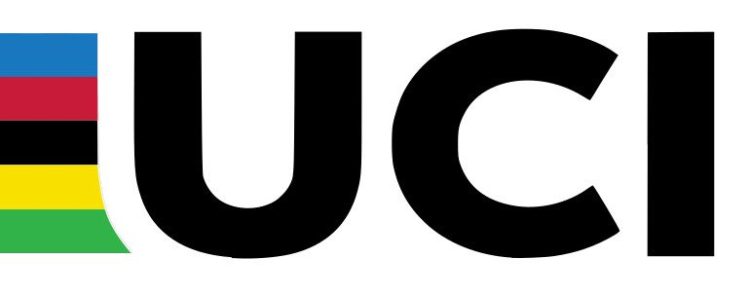Maximizing The Power Phase of Your Pedal Stroke
By Christopher Schwenker
The Key to Powerful Pedaling: It’s Not Just About Your Quads
If you’re like almost every cyclist who’s ever thrown their leg over a bike’s top tube, you’re always thinking about how to ride faster, longer, and with less fatigue. While most cyclists immediately think about their quads when it comes to producing more power, another muscle group is just as crucial to optimizing your pedal stroke—the glutes.
Performance scientists and kinesiologists have long studied the pedal stroke, sparking numerous theories and ongoing debates about the best ways to optimize it. Rather than focusing on any specific approach, let’s look at how understanding the muscles involved can help you get the most out of your stroke—starting with the power phase (and then turning to the recovery phase in the next edition).
The Power Phase of the Pedal Stroke
The power phase, or downstroke, is the part of the pedal stroke between 11 and 5 o’clock (300 to 140 degrees). It’s the fraction of the stroke where over 90% of the power during cycling is generated. The key muscles during this phase include the glutes, quads, hamstrings, and calves.
The glutes drive powerful hip extension, while the quads extend your knee. These muscles work together to push your leg downward and generate force during the initial phase of the pedal stroke. At the same time, the hamstrings and calves stabilize the knee and ankle joints to optimize force transition to the pedals.
The Role of the Quads
The quadriceps, the group of four muscles on the top of your thigh, are the first muscles to engage as you start the downstroke. They activate just before the top of the stroke (around 11 o’clock) and continue until about 3 o’clock. While they are essential for power, their role is relatively short-lived compared to the glutes.
The Role of the Calves
The calves are the muscle group located below your knee, behind your lower leg. They consist of the gastrocnemius and soleus. They play a crucial role during the downstroke, especially around 3 o’clock, when they help prevent the heel from dropping.
During the backstroke—the transition between the downstroke and upstroke—the calf muscles engage to point the toes. At the bottom of the stroke, pointing the toes downward at a 20-degree angle helps transfer all the power generated during the downstroke into the crank.
This technique, known as “ankling,” sparked controversy but gained popularity after Greg LeMond famously advised riders to “Act like you’re scraping mud off the bottom of your shoe.”
Weak calves can cause heel drop and reduce power output. Ensuring that your calves are strong and engaged during the downstroke maximizes efficiency.
The Role of the Hamstrings
During the downstroke, the hamstrings play a key role in stabilizing the knee and coordinating motion, ensuring smooth force transfer to the pedal. Like the calves, they help control the direction of power until the transition at the bottom of the stroke, where they contract to optimize the shift into the backstroke phase.
The hamstrings also contribute to hip extension as you come over the top of the pedal stroke. The ideal movement involves dropping your heel at the 12 o’clock position, transitioning from toes pointed down at about 20 degrees to a heel position angled 10 degrees past parallel by the 3 o’clock position.
The Glutes: The Unsung Heroes of Pedaling Power Production
Glutes, commonly called the buttocks muscles, are perhaps the most critical muscles for optimizing power and efficiency on the bike. These large muscles engage at the top dead center of the stroke (12 o’clock or zero degrees) and are active throughout the entire downstroke.
Peak power production occurs at about 4 o’clock (120 degrees) when the combined force of the glutes, quads, and hamstrings is at its highest.
Why the Glutes May Be the Most Important Cycling Muscle
Here’s why focusing on your glutes is critical for cycling performance:
- Power Generation: The glutes account for over 25% of the force produced during the pedal stroke and are active nearly 50% of the time.
- Injury Prevention: Weak or fatigued glutes can lead to knee instability, overuse injuries, and joint pain. They also help prevent the quads and hamstrings from overcompensating, which can lead to muscle imbalances.
- Climbing Power: Strong glutes are essential for powering through climbs in and out of the saddle.
- Posture and Stability: The glutes control the rotational motion of the hip and stabilize the knee, which is crucial for maintaining proper cycling form and preventing injury.
Tips for Maximizing Glute Activation
To get the most out of your glutes, follow these tips:
- Stretch and Foam Roll: A consistent stretching and foam rolling routine focusing on the hip flexors, calves, quads, and hamstrings will help prevent tightness that can limit glute activation.
- Strengthen Your Glutes: Incorporate exercises that target the glutes to improve their strength and endurance, such as squats, lunges, and hip thrusts.
- Activate Before Riding: Perform muscle activation exercises before you ride to help improve their recruitment during the pedal stroke and prepare your glutes for optimal performance.
- Focus on Pedal Stroke Efficiency: Aim for a smooth, high-cadence pedal stroke. Avoid pushing too hard, as a fatigued glute works just like a weak one, leading to inefficiency.
- Maintain Core Stability: A strong core provides a stable foundation for your glutes and leg muscles, improving overall efficiency and power.
- Proper Bike Fit: A proper bike fit by a trained professional will prevent you from being in an over-stretched position, which can place undue lengthening stress on your glutes and lead to discomfort or inefficiency.
- Posture Matters: Sit deep in the saddle and engage your glutes as you apply force to the pedals. Pay attention to your body position while cycling, at your workstation, or when relaxing off the bike.
Get the Most Power Out of Your Pedal Stroke
The quads often get the spotlight when you think about cycling muscles, but the glutes should take center stage. They play a significant role in power production, efficiency, and injury prevention. You’ll improve your performance and enjoy a more comfortable ride by strengthening and activating your glutes.
Remember, a balanced approach is key. Focus on all the muscles involved in the pedal stroke, but don’t overlook the glutes. They are the powerhouse of your pedal stroke and essential for maximizing your cycling potential.
About the Author
After over twenty years as director of his private physical therapy practice, Chris stepped away to pursue his passion for virtual cycling and writing. He founded TheZommunique.com, the leading source of independent cycling esports journalism, is a frequent contributor to Cycling Weekly, Cycling News, and road.cc, and co-hosts The Virtual Velo Podcast. He cycled 3,900 miles across the US in 2022 to support his virtual cycling non-profit, The DIRT Dad Fund.






















